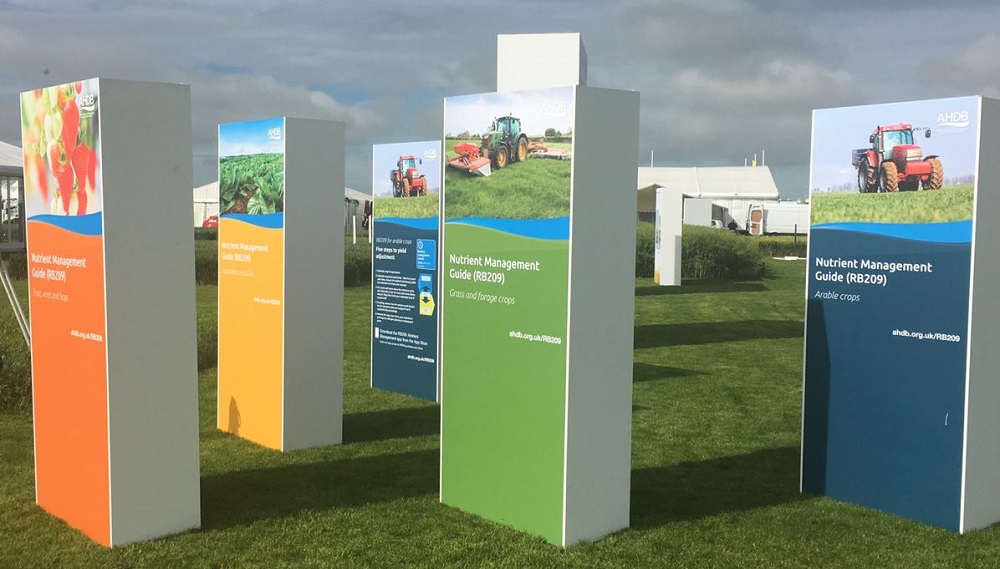Latest nutrient management guidance (RB209) update ‘on track’
Wednesday, 10 November 2021
With fertiliser prices skyrocketing and the pressure to reduce nutrient losses increasing, Alice Sin, who helps manage the delivery of RB209 at AHDB, highlights the latest research results set to keep arable crops nourished.
Background to the 2022 RB209 revision
It’s been almost five years since we issued the first update of the AHDB Nutrient management guide (RB209). Previously managed by Defra, the baton was passed on to us to help deliver robust guidance on the optimisation of fertiliser, manure, and slurry applications to cropped land.
To provide the regular (usually annual) revisions, we invest in cycles of nutrient management research. Several projects concluded in 2021 and their results feed into the 2022 update. One of these projects, which looked at nitrogen and sulphur recommendations in barley, featured in the autumn 2021 edition of Arable Focus (page 10). This article outlines how the other projects have advanced our understanding of nutrient management.
Read the latest Arable Focus magazine
Updating nitrogen and sulphur fertiliser recommendations for spring barley (report)
Before work on HS2 started, a detailed assessment of the rail route occurred. It unearthed prehistoric remnants and Roman battlefields – but it also yielded an agricultural treasure trove. The collection of thousands (>1,400) of topsoil and upper-subsoil (< 50 cm) samples along the track’s route – from London to Crewe and Leeds – provided a unique analysis opportunity. In the first project, AHDB funded Reading Agricultural Consultants to analyse these samples, particularly to explore the relationship between nutrients/pH in the topsoil and the more mysterious subsoil.
Analysis of top and subsoil data from the HS2 rail project (report)
The second project looked at RB209’s liming guidance. Changes to support mechanisms, lime products and farming systems, meant a review of liming guidance was overdue – not only in relation to lime’s influence on soil acidity/pH, but also its role in delivering calcium, an essential nutrient, to crops. During the production of RB209, we work with partners across industry – and the Agricultural Lime Association (ALA) was best placed to conduct the initial review (at no cost to AHDB).
Review of soil acidity and liming guidance (report)
As it is essential to maintain the independence of RB209, research results are peer reviewed before recommendations are made. Independent recommendations are then considered by the appropriate Technical Working Group (TWG) – for example, the Arable TWG – which includes farmers, manufacturers and agronomists. Guidance is then finalised by the main RB209 steering group. All these groups form the UK Partnership for Crop Nutrient Management. The two projects described have led to numerous changes to the 2022 edition, with section 1 – Principles of nutrient management and fertiliser use – receiving the most change
Summary of changes (section 1)
- New subsoil recommendations to improve estimates of soil nutrient supply and lime requirements
- New clay classification (in relation to potash release and applications)
- Revised magnesium section, with enhanced guidance on:
- Soil types most at risk of low magnesium indices
- Potential risk of magnesium deficiency in arable crops
- How to increase magnesium indices (when required)
- Management of soil types with high magnesium indices
- Revised soil acidity and liming section, with enhanced guidance on:
- The role of soil pH in fertiliser-use (mineral and organic) efficiency, including nutrient availability, and the reduction of greenhouse gases (nitrogen lost as nitrous oxide)
- Improved calculations of lime requirements according to soil type
- How to make maintenance/top-up applications of lime that account for losses, crop offtake and other acidifying factors
- Consideration of the reactivity (fineness of grinding) of liming materials, which influences speed of action
Where section 1 guidance impacts on other sections, these have been adjusted accordingly. For example, the HS2 project led to recommended changes on phosphorus, potassium and magnesium in sections 2 (organic materials), 3 (grass and forage) and 4 (arable crops), in addition to section 1.
Guidance adapts to nitrogen price spike
The current energy crisis has led to unprecedentedly high fertiliser prices. The price spike means growers need to factor a new ‘economic optimum’ – or the point at which the value of extra grain produced is not worth the cost of the extra nitrogen applied – in their nutrient management plans. In response, AHDB commissioned ADAS to conduct a rapid review of RB209 guidance.
The first stage, published yesterday (9 November), extends RB209 price tables by up to £2.50 per kilogram of nitrogen (equivalent to £863 per tonne of ammonium nitrate).
The tables have also been extended by up to £350 per tonne for cereals and £700 per tonne for rapeseed, to help account for stronger prices.
Examples
The new information indicates that for a grain price of £200 a tonne and a rise in the ammonium nitrate fertiliser price from £345 to £863 a tonne would see a reduction in nitrogen application of 70 kg/N a hectare.
Similarly, at a rapeseed price of £500 per tonne, the same price rise for nitrogen would see a reduction in fertiliser application of 70 kg/N a hectare.
The resulting changes in yield would be -0.6 tonne and -0.25 tonne per hectare, respectively.
How best to respond to costly fertiliser nitrogen for use in 2022 (research review)
Nitrogen fertiliser adjustment calculator
How should farmers manage costly nitrogen fertilisers? (blog)
Fertiliser recommendations revised on back of price spike (news item)
Adapting nitrogen guidance (part two)
The second part of the study, reporting in January 2022, will consider the prioritisation of nitrogen in specific cropping situations. This element will consider quality specifications and the value of nitrogen from non-fertiliser sources.
Input-cost and commodity-price volatility means a constant eye needs to be kept on the nutrient management equation. With climate change mitigation firmly back on the world’s radar, in addition to numerous other environmental concerns, RB209 is needed more than ever to ensure nutrient calculations are based on best available evidence.
The 2022 edition of the AHDB Nutrient management guide (RB209) will launch in February.
Keeping RB209 revisions on track
Timeline based on the 2022 RB209 update.
Mar 2021: Research findings and recommendations presented.
Jun 2021: Studies peer reviewed and revised recommendations produced.
Aug 2021: Technical Working Group members provided feedback.
Sep 2021: All feedback considered.
Oct 2021: Recommendations finalised by the RB209 steering group.
Nov 2021: Revised nitrogen management information (part one) issued.
Jan 2022: Revised nitrogen management information (part two) issued.
Feb 2022: RB209 updated.
Topics:
Sectors:
Tags:



